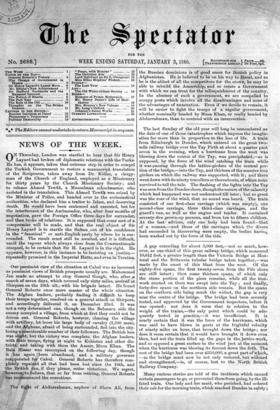The last Sunday of the old year will long be
remembered as the date of one of those catastrophes which impress the imagin- ation far more than in proportion to the loss of life. A train from Edinburgh to Dundee, which entered on the great two- mile railway bridge over the Tay Firth at about a quarter past seven in the evening, when a hurricane from the west was blowing down the course of the Tay, was precipitated,—as is supposed, by the force of the wind catching the train while it was passing through the lattice-girders of the central por- tion of the bridge,—into the Tay, and thirteen of the massive iron girders on which the railway was supported, with it ; and there went down with its ninety travellers or thereabouts, of whom none survived to tell the tale. The flashing of the lights into the Tay was seen from the Dundee shore, though the nature of the calamity which had happened was not understood till later; but so great was the roar of the wind, that no sound was heard. The train consisted of one first-class carriage (which was empty), one second-class carriage, three third-class carriages, and the guard's van, as well as the engine and tender. It contained seventy-five grown-up persons, and from ten to fifteen children. At the last- advices, only one body had been found—that of a woman,—and those of the carriages which the divers had succeeded in discovering were empty, the bodies having been washed out by the force of the tide.










































 Previous page
Previous page